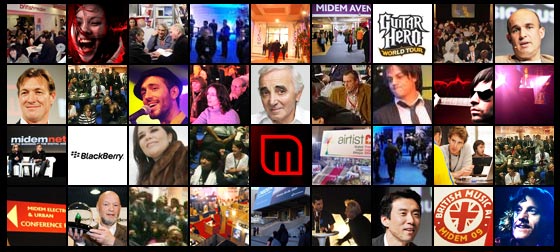 It seems to be music week this week: Apple running its somewhat anticlimactic “It’s only Rock’n’Roll” event today, lots of folks pondering Spotify Mobile and now this: the good folks at Forrester Research have released an interesting report entitled “Music Release Windows: The Product Innovation That The Music Business Can’t Do Without”. This is some statement.
It seems to be music week this week: Apple running its somewhat anticlimactic “It’s only Rock’n’Roll” event today, lots of folks pondering Spotify Mobile and now this: the good folks at Forrester Research have released an interesting report entitled “Music Release Windows: The Product Innovation That The Music Business Can’t Do Without”. This is some statement.
The Old Model is Broken
 Forrester was kind enough to let me have a glance at the report, so let me dive into its revelations and the underlying rationales, which starts off with looking at the broken model of the industry: in (latter part of) the 20th century, the music industry was mainly fueled by record sales (first vinyl, then CD). With the introduction of digital media and, in particular, ubiquitous broadband connectivity in many parts of the world, it shifted to digital downloads. Unfortunately, it mainly shifted for downloads that people did not pay for. iTunes has only taken a piece of the action. And iTunes’ ¢99 per song model has then contributed to people no longer buying whole albums but only the songs they like most, which somewhat squashes profitability.
Forrester was kind enough to let me have a glance at the report, so let me dive into its revelations and the underlying rationales, which starts off with looking at the broken model of the industry: in (latter part of) the 20th century, the music industry was mainly fueled by record sales (first vinyl, then CD). With the introduction of digital media and, in particular, ubiquitous broadband connectivity in many parts of the world, it shifted to digital downloads. Unfortunately, it mainly shifted for downloads that people did not pay for. iTunes has only taken a piece of the action. And iTunes’ ¢99 per song model has then contributed to people no longer buying whole albums but only the songs they like most, which somewhat squashes profitability.
Live events, etc used to be a support for record sales. They have recently become the biggest revenue generator for some recording artists (as well as for some labels, at least if they managed to conclude so-called 360-deals with artists) but they cannot alone make up for the shortfall. On top of all that, people like my 14-year-old son use a plethora of services (Spotify, Last.FM, YouTube and probably dozens more of which I do not know) to quench their thirst for music.
Change the Product, not the Business Model
The researchers suggest to re-think the product offering in order to engage the fan more holistically: leverage diverse assets through those maligned 360 deals: they might “feel” a bit tight around the hips but the opportunities are immense: labels and (capable) artist management can create a very rich offering of diverse content. This then ties in into step #2, which sees the industry moving away from (or rather beyond) the classic album model where an artists would release one album per year (or so) and sustain the buzz in promotion thereof (and in between) with concerts, interviews, singles and EPs. With digital distribution, there is no need for that (an album on CD might be maintained as one part of the mix however): one can produce a continual stream of creative products from the artist. This will help build sustainable and longer-term relationships with fans.
The final piece is – put simplistically – the introduction of release windows similar to what the film industry is doing for decades: releases are structured successively with higher product (read: better monetizable) tiers coming first. It is re-vamping a trusty old model though: you want it first and exclusive, you pay more.
The bottom line is – oh, the bliss of buzzwords – the 4 C’s, which are content, convenience, cost and community: The higher the cost, the greater the convenience and the better the choice of content. The authors basically plead a re-introduction of scarcity in order to re-build the perceived value. Convenience ranks above content in terms of the creation of value: and this is where mobile plays a role: it is always with the user, it is always on, it is readily accessible (at least the new generation of phones is). It is arguably why services like Spotify are believed to be a valid revenue stream for labels, at least on mobile…
Community is the Glue
Is community just thrown in for good measure? No, of course not. According to Forrester, “Community enhances social value.” It is the glue that will be the key differentiator from piracy (or so they hope): the thinking is that a sense of community will build some sort of moral cohesion (another C). Here though, Forrester tails off a little. It says:
“Social functionality should be deployed right across the hierarchy.”
 Nothing wrong, you say? No, it is not. However, “deploying functionality” is way short of what is needed to build social value. What makes a community? Emphatic engagement with fans, not a set of tools that sits somewhere on the various sites and offerings being operated by some far-away call center. Whilst the principle is right, the suggested execution remains a little shallow. Forums & networks is all they have to offer. Hm. Everyone has them already, so will this work?
Nothing wrong, you say? No, it is not. However, “deploying functionality” is way short of what is needed to build social value. What makes a community? Emphatic engagement with fans, not a set of tools that sits somewhere on the various sites and offerings being operated by some far-away call center. Whilst the principle is right, the suggested execution remains a little shallow. Forums & networks is all they have to offer. Hm. Everyone has them already, so will this work?
The principle does work, I believe, However, the execution is much, much more complex than the analysts reveal. Here, one can make or break this.
Release Windows
The analysts suggest that a release should be tiered by windows: start with a preview, then go into the mainstream for-pay channels (2-3 weeks delayed) and finally release to “free-to-air” (6 weeks delay). The premier window is suggested to being the one where incremental value can be unlocked: first releases, premium value-added content (and no DRM!), etc; users only get this if they pay. Elegant packaging and programming is crucial to convince people of the richness of this. Then they will not defect to P2P sites. CD releases remain in the mainstream window and then, finally after six long weeks, the Spotifys of this world will be able to get it through their ad-supported model, TDC Play, the Danish flat-rate all-you-can-eat model that generated more than 100m downloads in 15 months would be able to add it to their package, etc.
 Mobile is in the premium tier (with very few others): Forrester believes that carriers’ and OEM’s efforts, investment and – last but certainly not least – billing relationships merit this. I would suggest that the eye-opener ringtone where one could charge huge premiums for monophonic (!) 20-second-loops would contribute to this conviction, too.
Mobile is in the premium tier (with very few others): Forrester believes that carriers’ and OEM’s efforts, investment and – last but certainly not least – billing relationships merit this. I would suggest that the eye-opener ringtone where one could charge huge premiums for monophonic (!) 20-second-loops would contribute to this conviction, too.
In the “modern world” with smartphones and flat rate data plans, a lot of it of course hinges on how such services tie in with a) the handset (app vs. mobile web), b) the provider(s), namely labels, artists, operators, handset manufacturers, other (mobile) distributors as well as iTunes, and c) the users, i.e. will they adopt it or will they defect to the (free) web side of things after all. The crackdown on piracy in many countries will have something of a disciplinary effect but the jury on this is probably still out.
Is that It?
There must be more in order to create compelling services and products. Otherwise, I cannot see people doing it in sufficient numbers. It could be seen online with Spotify where, anecdotally, only 17,000 in the UK have signed up to the premium service; I cannot believe that the premium music market should be limited to that. The analysts suggest the creation of
“truly 21st century products […] blend[ing] interactivity, multimedia, multi-platform, convenience and social to create something totally new.”
 That sounds awesome but how do you create it? The starting point needs to be the relationship between artist and fan. I have long held that this bond is more than actual musical tastes; it is a lifestyle decision, which is why fans crave to belong to “their” artists’ circles. As early as 2002, a “Britney Spears Mobile Fanclub” was successfully running, and that did not even involve her label! What it did involve though was access (or at least the promise thereof) to Britney (who was, at that time, arguably one of the biggest recording artists in the world). The service combined text (real-time backstage reports from Britney herself!), live concerts, editorial, merchandise, and special promotions to create a rich and comprehensive experience around the artist. And this at a time when a ringtones were just on the rise and premium SMS not widely available! The principle works! It does take however (and that’s a big IF) active involvement of a complex ecosystem of artists, management, labels, merchandise firms, media, etc.
That sounds awesome but how do you create it? The starting point needs to be the relationship between artist and fan. I have long held that this bond is more than actual musical tastes; it is a lifestyle decision, which is why fans crave to belong to “their” artists’ circles. As early as 2002, a “Britney Spears Mobile Fanclub” was successfully running, and that did not even involve her label! What it did involve though was access (or at least the promise thereof) to Britney (who was, at that time, arguably one of the biggest recording artists in the world). The service combined text (real-time backstage reports from Britney herself!), live concerts, editorial, merchandise, and special promotions to create a rich and comprehensive experience around the artist. And this at a time when a ringtones were just on the rise and premium SMS not widely available! The principle works! It does take however (and that’s a big IF) active involvement of a complex ecosystem of artists, management, labels, merchandise firms, media, etc.
The new generation of artists is of course significantly more tech-savvy (see e.g. upcoming singer Remi Nichole‘s video blogs and tweets): one sees a much higher willingness to participate actively and – even more importantly – authenticly in engaging the fans (“audience” is probably an overcome term in this respect). This can work, and on mobile it can work as a revenue generator, too! But the core is the revised approach to the people (and this is not limited to the music industry): they are not sheep that want to be exploited; if you treat them that way, they bolt. Treat them honestly, fairly, transparently, and you have at least a fighting chance!

2 Pingbacks